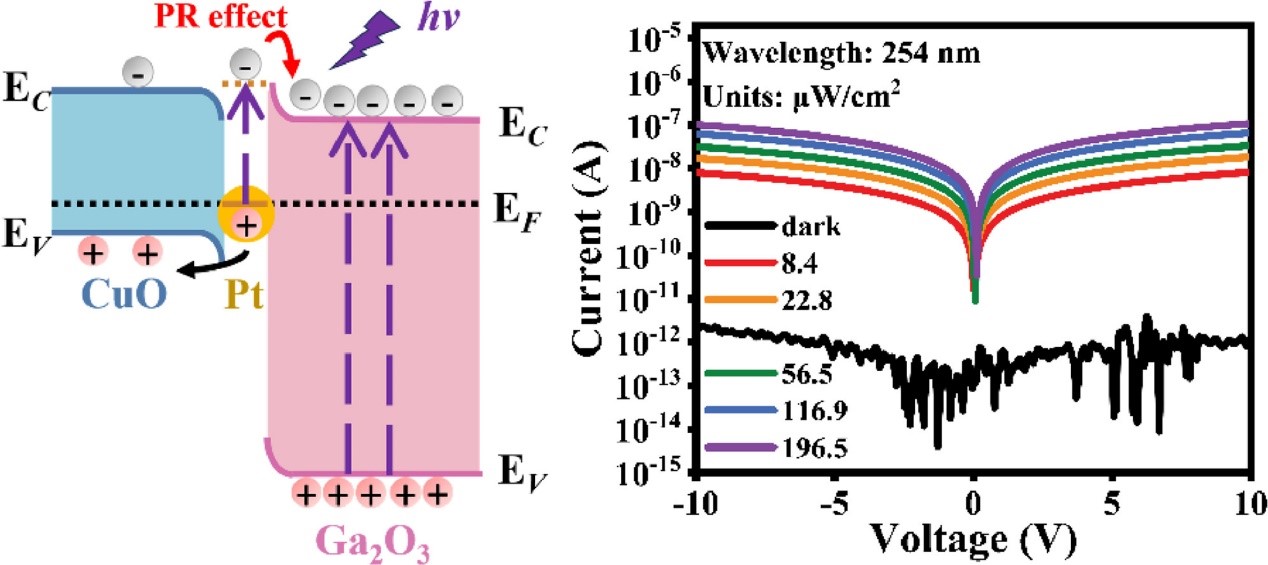
【Device Papers】Interfacial modification of CuO/Ga₂O₃ by plasmonic Pt for high performance self-powered solar-blind UV photodetector
日期:2024-12-11阅读:550
Researchers from the Zhejiang University have published a dissertation titled "Interfacial modification of CuO/Ga2O3 by plasmonic Pt for high performance self-powered solar-blind UV photodetector" in Surfaces and Interfaces.
Abstract
Applications for solar-blind photodetectors (PDs) vary widely and include space communications, ozone monitoring, and more. In this study, pulsed laser deposition (PLD) and ion sputtering were employed to develop an unusual self-powered deep ultraviolet (UV) photodetector based on CuO/Ga2O3 with a Pt nanoparticles (NPs) interface. The Pt NPs interface transforms the device design from heterojunction to Schottky junction. The device features a low dark current of 83.2 fA and performs a high photo-to-dark current (Iphoto/Idark) ratio of 1.72 × 104, a specific detectivity (D*) of 9.98 × 1011 Jones, and a quick decay time of 56 ms upon 254 nm UV light at 196.5 μW/cm2 without any power supply. The CuO/Pt/Ga2O3 Schottky junction-based device outperforms the CuO/Ga2O3 heterojunction-based device in terms of detection capabilities in both biased and non-biased settings. This is explained by the Schottky barrier creation mechanism with both Ga2O3 and CuO films, as well as how the plasmon resonance effect (PR effect) balances the barrier on the Ga2O3 side. Furthermore, Pt NPs serve as a potential well, offering an additional recombination channel that accelerates the decay process when the light is turned off. Our findings pave the way for more optoelectronic uses of Ga2O3-based solar-blind UV photodetectors in the future.

A high-performance solar-blind photodetector based on a CuO/Pt/Ga2O3 Schottky junction is developed by introducing Pt nanoparticles as an interfacial modulator within the CuO/Ga2O3 heterojunction. The Schottky junction and the plasmon resonance effect caused by Pt nanoparticles are used to minimize the device's dark current and enhance its photocurrent, respectively. Furthermore, the Pt NPs serve as a potential well, providing an additional recombination channel that accelerates the decay process when the light is turned off. The present research highlights the application of metallic interfaces for regulating energy bands and improving the response performance of Ga2O3-based heterojunction self-powered devices.
DOI:
https://doi.org/10.1016/j.surfin.2024.105181


